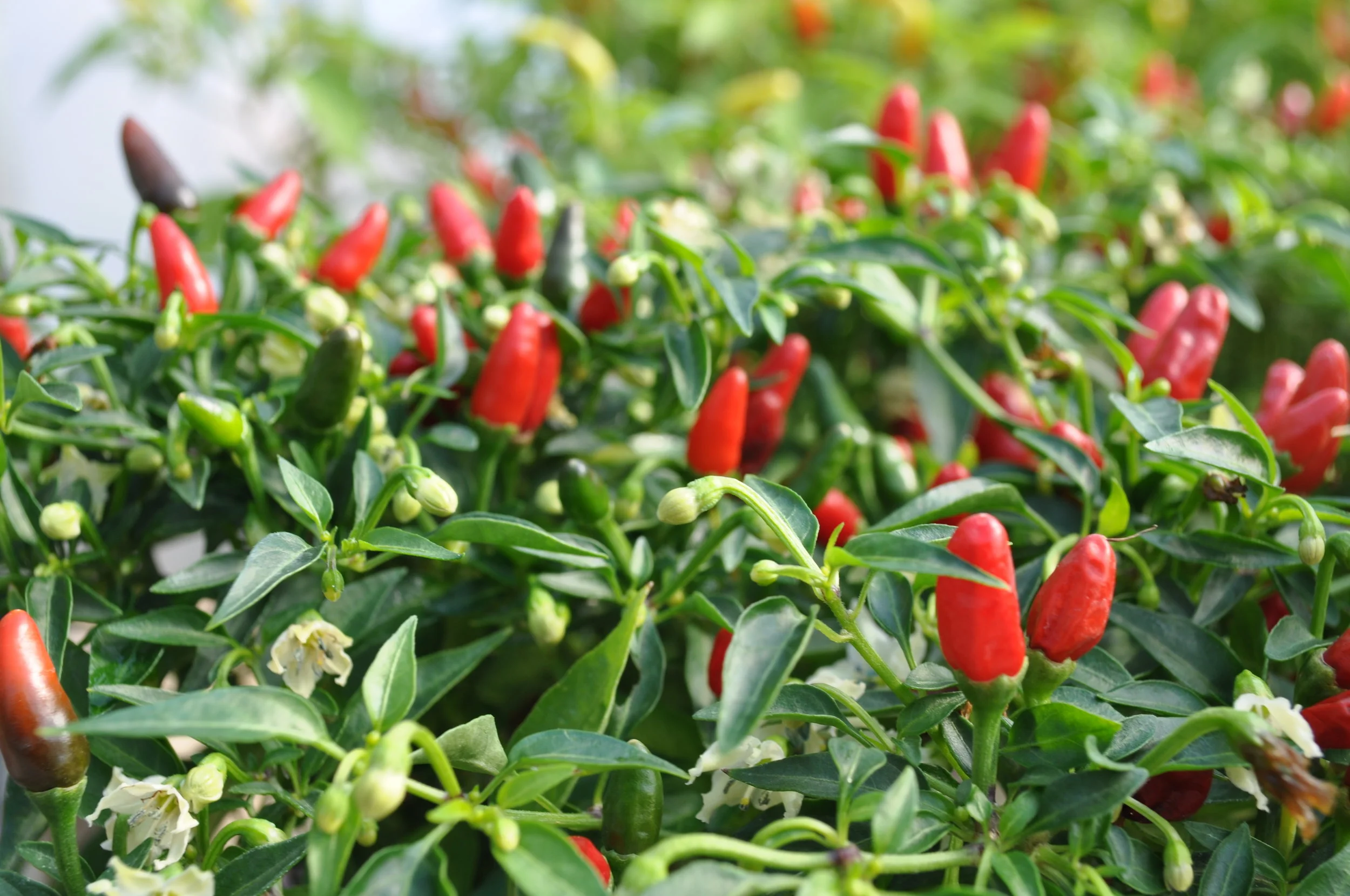Chilli Guide
Chilli Guide
Fresh, dried, powdered, the chilli, or chilli pepper, has become a staple, if not a necessity, to everyone who loves a little fire in their belly.
Chilli’s are commonly grouped into three categories; bell peppers, sweet peppers and hot peppers, and are the fruit of the chilli plant, a species of the nightshade family.
The heat and intensity in a
History – In Brief!
Chilli’s are thought to have originated in the Americas, dating back to 7500 BCE, but were domesticated around 6000 years ago in Mexico. It was the Portuguese who introduced chilli to Asia in the 16thcentury. Now, these natural heat packs are grown, consumed and exported throughout the world.
Heat Measurement Guide
Historically, the intensity of a chilli is measured by Scoville Heat Units (SHU), an empirical measurement that relies on the capsaicin sensitivity of human testers developed by American pharmacist Wilbur Scoville in the early 1900s that measures the heat or pungency of chilli peppers.
Starting at 0 on the SHU scale you’ll find the good old bell pepper, then they head up the heat rating list something like this;
Jalapeno – 2,500 – 5,000 SHU
Serrano – 10,00 – 23,000 SHU
Cayenne – 30,00 – 50,000 SHU
Birds Eye – 100,000 – 225,000
Habanero – 100,00 – 350,000
Bhut Jolokia – 855,000 – 2,199,999
Carolina Reaper – 1,600,000 – 2,199,999
Chili Fever – here’s a few you may or may not know!
Birds Eye Chilli – The bird’s eye might be the baby of the chilli family when it comes to size but they can sure pack a punch as far as heat goes!
Bell Pepper – the mildest of all pepper, the bell pepper, or sweet bell pepper as it’s also known, is perfect for those who can’t handle the heat.
Bhut Jolokia – The Nagas – One of the world’s hottest chilli’s, it originates from India where it’s been cultivated for centuries. They’re collectively known as the
Cayenne – we commonly know cayenne in it’s powdered form of cayenne pepper, and it sure as hell packs a punch once ground into powder.
Chipotle – Chipotles have a deep, rich, smoky flavour and are most commonly found in a can for South American cooking.
Habanero – There are a few habanero chilli’s around and some of the hottest are the Chocolate (named for its colour and the hottest of all habaneros), Caribbean and Orange. They are thought to have originated from Cuba then shipped off to Mexico where they are now most widely grown.
Tip – habanero lends itself brilliantly to mayonnaise. Pound it up in a mortar and pester so the colour permeates the white of the mayo.
Jalapeno – You’ll find gentle notes of citrus come through the heat of a good jalapeno chilli. A commonly staple in the chilli family.
Long Chilli – Grown to a length of up to 15cm, these milder chilli’s are green while they’re in the growth phase on the plant then turn red once ripened.
Mirasol Chilli – Mirasol’s are extremely hot and boast a vibrant red colour, grown to around 15 cm long they have a more conical shape, once dried they’re commonly known as guajillo.
New Mexico Green Pepper – this is a smooth pepper with lot’s of flesh that varies in heat depending on its cultivation – you’ll just have to taste this one and see for yourself I’m afraid!
Serrano – these resemble a birds eye but feature a
Scotch Bonnet – Not for the faint hearted the Scotch Bonnet is closely related to the hottest of hot habaneros, it’s also known as the Caribbean or Bonney Pepper and is found mostly in the Caribbean Islands. Interestingly there are also sweet varieties of the scotch bonnet floating around too. Even the hot ones have a sweet flavour and are used in many Islander cuisines, think jerk chicken as a guide.
Sichuan Chilli – Sichuan chilli has a lemony flavour hint with a nice thin skin and moderate heat rating, they grow to about 4 to 6 cm long.
Pablano Chilli – Commonly known as
Growing Tips
The most important things to consider when growing a chilli, especially if you’re after
Chilli peppers are perfect to grow in a hydroponic system and will be happy in any sized container.
They thrive with moisture and heat and the temperature of your growing environment greatly affects the levels of heat in your harvested pepper.
To achieve a hotter pepper with a bright red
Plant stress also affects the heat levels in your chilli, conditions like pH, drought and grow room temperature.
As far as lighting is concerned, a basic rule of thumb to keep in mind is that you’ll need about 40 watts per sq foot when growing any tall, high yielding plant like chilli peppers.
If you’re growing from seed they need lots of warmth to germinate.
Start the seed in an inert cell or cube for the best results and then transplant into your hydro system once the seeding has grown to about 10 cms or has established between 6 to 10 good leaves.
Chilli seeds germinate in a temperature of around 24 – 28 degrees Celsius, once they have reached the desired height and you’ve transferred them to your hydro system you can reduce the heat the 20 to 25 degrees mentioned earlier.
There are three recognised spelling of the of the word chilli – chilli, chile, and chilli.
All of these chilli images were taken at Flavours Herbs in Melbourne, my favourite growers of potted herbs, you can distinguish them by their purple pots! Search flavours herbs on FB for more info or flavoursherbs.com for stockists.





















